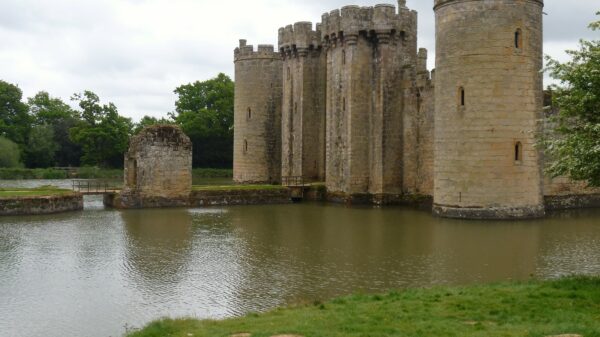From Bodiam to Rye Harbour
The river rises at Rotherfield, and flows into the sea at Rye Harbour the total length is about 35 miles. It is almost all in East Sussex; for some way it forms the boundary with Kent, and a small stretch is in Kent. It is referred to properly as the Eastern Rother, as opposed to the River Rother in Hampshire and West Sussex. Locals refer to it as the Rother, and the use of the term “Eastern Rother” locally is likely to cause confusion.
Navigation for vessels such as cruisers is limited to the 12 mile stretch between Bodiam and the lock known as Scott’s Float, a mile or two above Rye, below which the river is tidal. Scots Float Sluice is only available for operation on limited number of days each year, and needs to be booked with the Environment Agency (03708 506506 – [email protected]) giving five days’ notice. There is a large slipway just upstream of the lock. The Environment Agency own this slipway and now say that it is not usually available for public use. It used to be open the public at 24-hours notice for a charge.
There is information about the tidal section on the Rye Harbour Boat Owners Association’s website and at the Environment Agency’s gov.uk pages. The Agency is Navigation Authority for Rye Harbour.
Canoes and similar may be able to penetrate upstream of Bodiam.
The following notes cover the non-tidal stretch between Bodiam and Scott’s Float.
There are a number of tributaries, which are generally very shallow and navigation on them is not recommended. The straight stretch above Scott’s Float leads to the junction with the Royal Military Canal. The canal continues the line of the river. Iden Lock, which begins the canal, is not navigable. The navigable river turns sharply north-westward at this point; from here the river has no sharp bends.
The River is managed by the Environment Agency, whose principal responsibility is water management. There is no licence: navigation is free. There is no formal requirement for insurance. Parts of the river, especially at Newenden, can be busy in summer with users ranging from swimmers and paddleboarders to powered craft.


